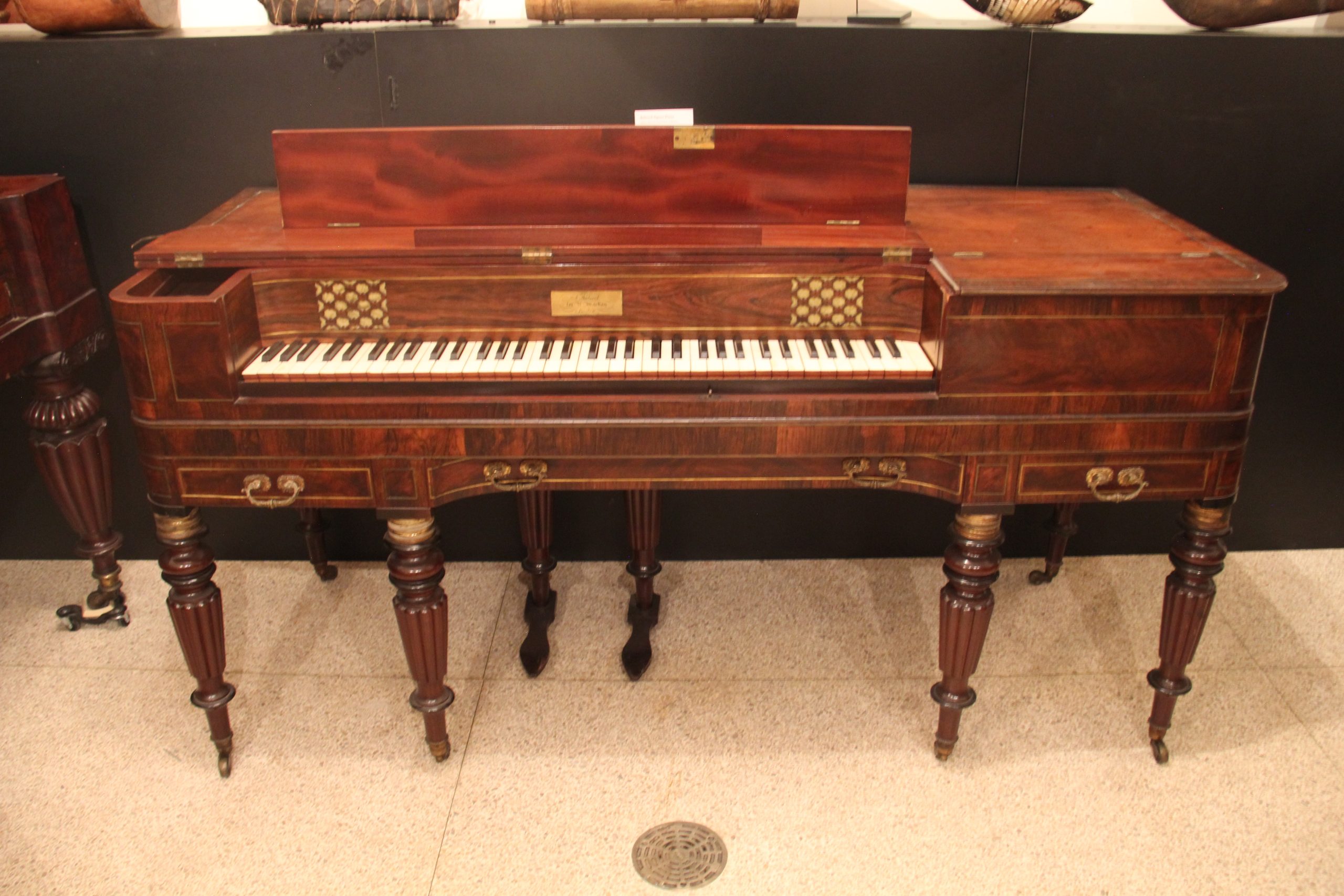Babcock Square Piano
Details
- Origin: Boston, Massachusetts, U.S.A.
- Date: 1824-1826
- Maker: Alpheus Babcock
- Collection: E 412
Description
Made of ebony keys and a wooden frame, with metal and leather inner-workings. Has “MADE BY / A. Babcock / for R. Mackay / Boston” on a brass plaque inlaid in its name board, “L. Babcock” written in pencil on the front of the upper and lower key-frame sections and the bottom of each, “22” in pencil on those bottom frames as well, and “Agnes W. Claflin” on a paper sticker in the right drawer.
Alpheus and Lewis Babcock, brothers, began producing pianos in Boston, Massachusetts, around 1810. In 1812, they established the firm ““Babcock, Appleton & Babcock” along with organ maker Thomas Appleton. In 1815, Lewis Babcock died, and Charles and Elna Hayt joined the partnership, renamed “Hayt, Babcock & Appleton,” but it quickly fell apart, and by 1816 Alpheus Babcock began working for Boston’s Franklin Music Warehouse. The Franklin Music Warehouse was financed by Captain John Mackay, who would later be a part of the piano-making firm “Chickering and Mackay.” In the 1820s, Babcock was eventually individually financed by the Mackays while at Parkman’s Market on Cambridge Street, which is why the Mackay name is often found on some of Babcock’s later pianos. In 1829, he moved to Philadelphia, Pennsylvania, to work for the Klemm & Brothers firm, and in 1832 he became a foreman at William Swift’s Piano Manufactory. In 1837 he returned to Boston to once again work for the Mackays within the firm Chickering & Mackay before he died in 1842.
Alpheus Babcock’s lasting contribution to the world of pianos is his invention of the one-piece iron frame, which allowed for piano-makers to use higher quality steel strings and kept pianos from warping inwards. It granted improved depth of sound and volume, and is still used to this day.
Sources
“Babcock Square Piano.” National Museum of American History. Accessed June 21, 2022. https://americanhistory.si.edu/collections/search/object/nmah_605830.


